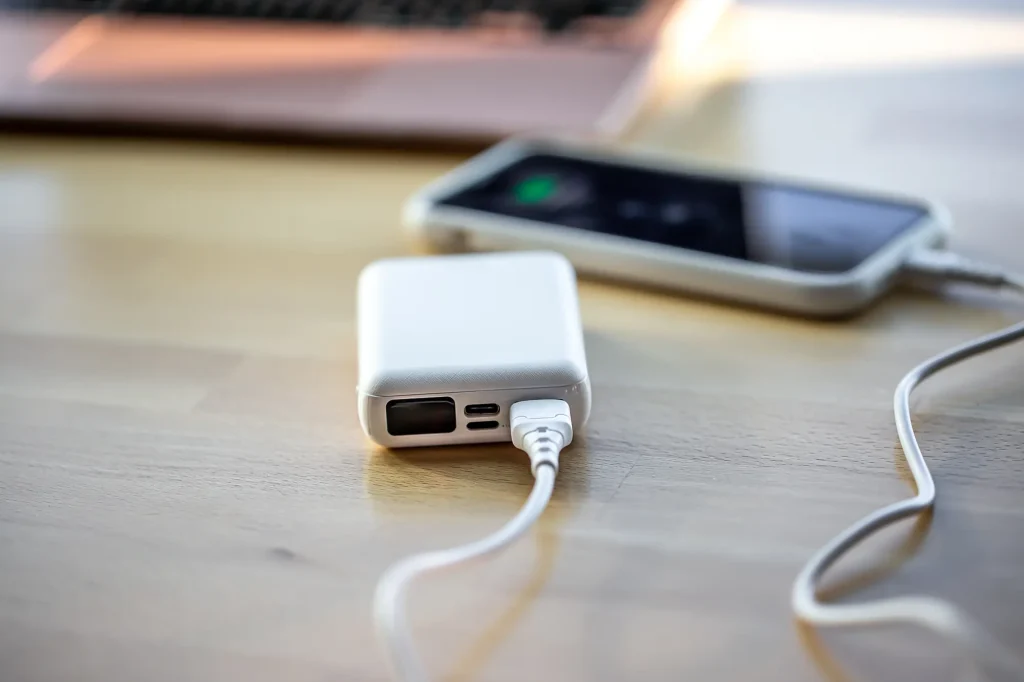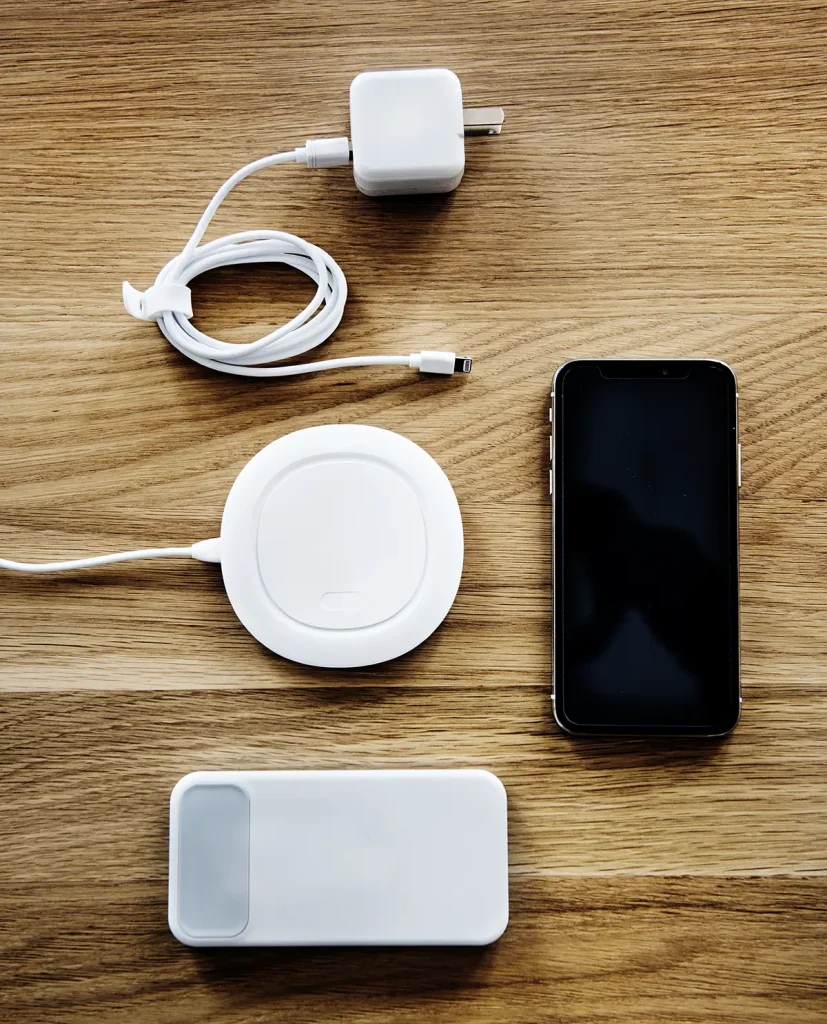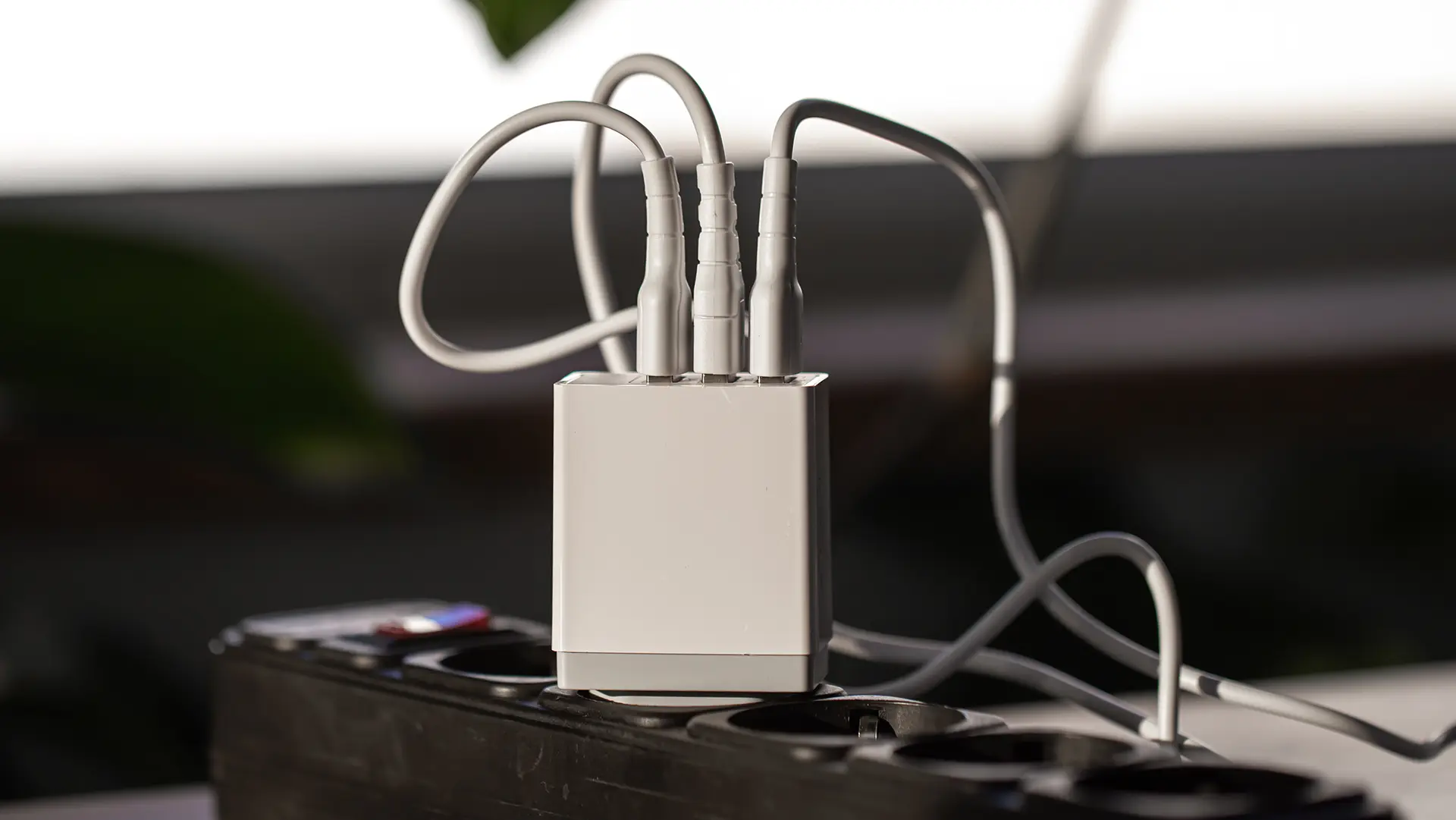From chargers that have a higher power than the needs of our phones to products of non-reputable brands; When do chargers damage our phone?
Choosing the right charger for the smartphones that we spend most of our day with usually takes more time than originally thought. Often we hesitate when buying a new charger and think about how much it is worth to spend on accessories for our phones or which option will last longer among the various brands available.
You may remember that some time ago, there were reports of the Galaxy Z Fold 6’s frame peeling off, which Samsung attributed to fake chargers and accessories. This trend has created a new wave of concern among users and has gone so far that some people are questioning the products of even the best brands on the market.

But can the charger really damage your phone? And if the answer is yes, how can we protect our smartphones from possible risks? Stay with us to examine this issue in more detail and see what key points are more important in choosing a charger.
Is Samsung’s claim about the damage to the Galaxy Z Fold reasonable?
This is not the first time that chargers have made headlines in the world of smartphones. In 2006, Benson Leong, one of Google’s engineers, realized that some of the USB-C cables he had ordered from Amazon were not standard and that using them for high-power charging was dangerous.
But in the case of Galaxy Z Fold 6, the case is different; Because Samsung stated that the reason for the problem is “miscellaneous chargers that have not properly implemented the ground connection system”, and perhaps pointing the finger of blame directly at the charger seems a bit unusual and worrying for many users. Of course, there is a possibility that the USB-C ground connection system is faulty; For example, not all necessary pins may be connected to ground, or the cable shield may not be properly connected to the chassis shield. In this case, it is not unlikely that the charging current will pass through another path, such as the chassis of the phone.
With this description, only Samsung knows if this current was enough to peel off the color of its phones or not; In the same way, improperly connecting the phone to the ground also disrupts the charging flow and the operation of the device.
In the next step, the non-standard grounding system has other risks, the most important of which is the creation of a short circuit: in this case, an internal defect, especially when charging with high power levels, can cause accidents such as electric shock, damage to the product receiving the charge, and even electrical fire. have a clue

If such defective chargers enter the market in abundance, we will face challenges with far more worrying consequences than peeling paint on expensive Samsung phones. Fortunately, these production problems are very rare and we should not worry about authentic products that are regularly tested under the supervision of experts.
Types of dangers of chargers for smartphones
We can divide the most common potential risks of smartphone charging into three groups, which we will examine in detail below:
- Using chargers that have higher power
- Overcharging the phone
- Using non-compliant chargers of other brands
Using chargers that have a higher power than the phone
Charges that have high power have more flexibility and this increases the demand for them. For example, with a 65-watt charger, you can charge your laptop in addition to your phone, which will be very useful when traveling or at work.
Theoretically, if the charger transfers a voltage that exceeds the capacity of the battery or the smartphone circuit, it will lead to an increase in temperature, a decrease in battery life, and other serious problems; However, in reality, smartphones have various safety features to ensure that this does not happen (although these safety features themselves may fail).
Today’s fast charging technology, such as USB Power Delivery offered by Apple, Google, and Samsung, works almost as a consensus; That is, the phone and the charger are made in such a way that they have a certain level of power transmission and reception, and ultimately the phone decides how much power to receive, not the charger.
So if your phone supports a maximum of 18W and you connect it to a valid 65W charger, the phone will receive 18W current. This internal protection mechanism minimizes the risk of damaging the phone. If this does not happen, the default charge is reduced to eliminate the risk of overvoltage.
On the other hand, new phones that use high-power chargers are constantly monitoring and checking the state of their internal battery to keep the voltage and temperature in the safe operating range. If something goes wrong, the device will automatically power down to cool down the phone. However, it is recommended to place the phone in a well-ventilated area while charging.
In addition, the USB-C ports of some smartphones feature protection against electrostatic discharge and overvoltage, which prevents short circuits and other damages. Most flagship and mid-range phones offer such features, although it is rarely talked about.
The quality of the charger also plays an important role. High-quality chargers, even if they have higher power, usually have more advanced protection circuits that prevent power fluctuations and overvoltages. These features can provide more security for your device.
Keep in mind that the strength and quality of fast charging safety features such as “phone and device communication” or “overvoltage protection” are not the same in different brands’ exclusive products, and that’s why we have different experiences working with chargers. . This is especially true of various chargers from companies that claim to implement their own charging standards.
Of course, we don’t mean that different chargers don’t have enough safety; But we know less about how their protective capabilities are implemented, and we can’t easily measure their strength against global USB standards.
Using chargers that provide less power than your phone usually doesn’t pose a serious risk, but it will greatly slow down the charging speed. The most common problem that happens in this case is that users use their phone while charging more and longer, which may have side effects.
What are the dangers of overcharging the phone?
Many users think that if they leave their phone connected to the charger all night, the phone’s battery will be damaged; But to what extent does this issue have a scientific basis?
In the past, concerns about overcharging were somewhat justified. Older batteries could overheat or even swell when overcharged; But most of today’s smartphones have smart protection circuits that automatically cut off power after the battery is full; Therefore, continuous charging does not cause battery disruption. Also, if your phone stays connected to the charger all night, the battery will no longer charge after reaching full capacity.
“Smart protection circuits in new phones automatically cut off power after the battery is full”
But the operation of the protective circuit does not mean that the long-term connection of the phone to the charger has no other negative effects:
When you leave the phone charging for a long time, the phone battery slowly loses power over time; But now because it is left connected to the charger, it starts filling the empty bits to charge the phone to 100% again. This cycle, called Trickle Charging, repeats itself continuously and raises the temperature of the phone.
In fact, heat shortens the life of your battery, not too much power input. If you are used to keeping the phone connected to the charger for many hours day and night, you will notice this problem within a few months to a year. Experts recommend that you always charge your phone between 20 and 80%.
Does using chargers of other brands harm the phone and battery?
This question is one of the most common concerns of users, and to answer it we have to look at various factors, including standards, quality of parts and technical specifications.
Charging standards and protocols
Today, most smartphones and chargers use fast charging standards designed for cross-device compatibility. The most important global standards developed by standard organizations or large companies for widespread use are:
USB Power Delivery supported by many mobile phone manufacturers such as Apple, Samsung and Google.
Quick Charge This technology was developed by Qualcomm and is used in many Android phones equipped with Snapdragon chips.
Power Delivery PPS is a more advanced version of USB Power Delivery that allows more accurate voltage and current regulation.
These standards somehow guarantee a safe connection between the charger and the devices, so if a charger from another brand supports the standards compatible with your phone, you probably won’t have a problem with it.
We remind you that mobile phone manufacturers have their own charging standards. For example:
- Apple MagSafe for wireless charging of new iPhones
- Adaptive Fast Charging for Samsung phones
- Hypercharge for Xiaomi phones
- Warp Charge for OnePlus phones
- VOOC and SuperVOOC for Oppo and OnePlus phones
- TurboPower for Motorola phones
Global standards are compatible with a wide range of devices, while proprietary standards usually only work with products of the same brand.
Quality of parts
If the chargers of one brand are of lower quality than another brand, they may not provide a stable and suitable current for your phone (higher brand); For example, these chargers may be made of poor-quality electronic components that lead to output fluctuations, or they may not have the necessary protection features against overvoltage, overcurrent, or short circuit at all.
The importance of research and choosing a valid charger is also clear at this stage. Some chargers do not use proper insulation material and this is really dangerous. High-quality chargers, even if they are not of the manufacturer’s brand of your phone, usually have high-quality parts and necessary protections.
Technical specifications
Technical specifications such as voltage, current (amps) and output power of the charger also play an important role in its safety and efficiency. Despite the explanations in the previous sections, it is still recommended to use chargers whose technical specifications match or are higher than your phone; Thus, you minimize the challenges.
Physical damage to the charging port
Sometimes the damage caused by the charger to the phone is not due to electric current, but due to damage to the charging port.
For example, inserting the charger with too much pressure can bend or break the pins inside the port. Also, using the charger at an inappropriate angle will lead to the gradual erosion of the port. Of course, remember that the accumulation of pollution in the charging port will destroy the optimal connection and will result in overheating of the battery.

How to choose a safe charger?
Unfortunately, there is no guarantee that a particular charger will be 100% flawless, as there is always the possibility of manufacturing issues; However, using the products of reputable brands of chargers and electrical appliances is less risky.
Official phone accessories are always the best and most reliable options, as these companies precisely match and test charging protocols with their products; So you’ll be sure that the charger is compatible with your phone and you’ll probably get better support.
Miscellaneous chargers are more risky, but if we’re looking to charge multiple devices at the same time, we’ll probably need them. Users have a good experience with products from big brands such as Anker and UGREEN, and naturally, these companies support USB Power Delivery technology well. Also, you can read the updated list of the best chargers and charging cables for phones on Zoomit.
Reputable brands invest a lot in research and development, and before releasing their products to the market, they provide them for testing by experts and experts. Also, these products are often sold with valid guarantees and are more reliable.
But again, we emphasize that no company is completely error-free. For example, Anker recently had to collect its power banks due to the risk of fire; But at least we know that the problems of official products and reputable companies are investigated and handled faster. When choosing a charger, keep these points in mind:
Before buying a charger, check its technical specifications. Make sure you select the option that supports your phone’s Fast Charge protocol and has the minimum power required to charge your phone quickly. Also, if you need to charge multiple devices, check the number and type of ports.
Before buying a charger, read expert reviews and opinions of other users. These sources can give you valuable information about the actual performance and stability of the charger over time.
Always keep your phone updated. Manufacturers sometimes improve charging compatibility and safety through software updates.
Do not underestimate the importance of the charger cable. Use cables with strong and flexible sheaths that are the right thickness and length. Also, the charger cable must be able to transfer the charging current and data at the speed you want.
Finally, experts recommend that you avoid buying cheap and no-name chargers, especially if these products are manufactured in countries with very poor quality control. These chargers not only put your phone at risk, but if they have a problem, the probability of warning and informing consumers will be low.
Choosing a safe and high-quality charger is actually a valuable investment on your phone. Buying low-quality chargers may seem like a short-term savings, but it may have consequences such as damage to the phone, reduced battery life, and even safety risks; So we must choose them with knowledge.
